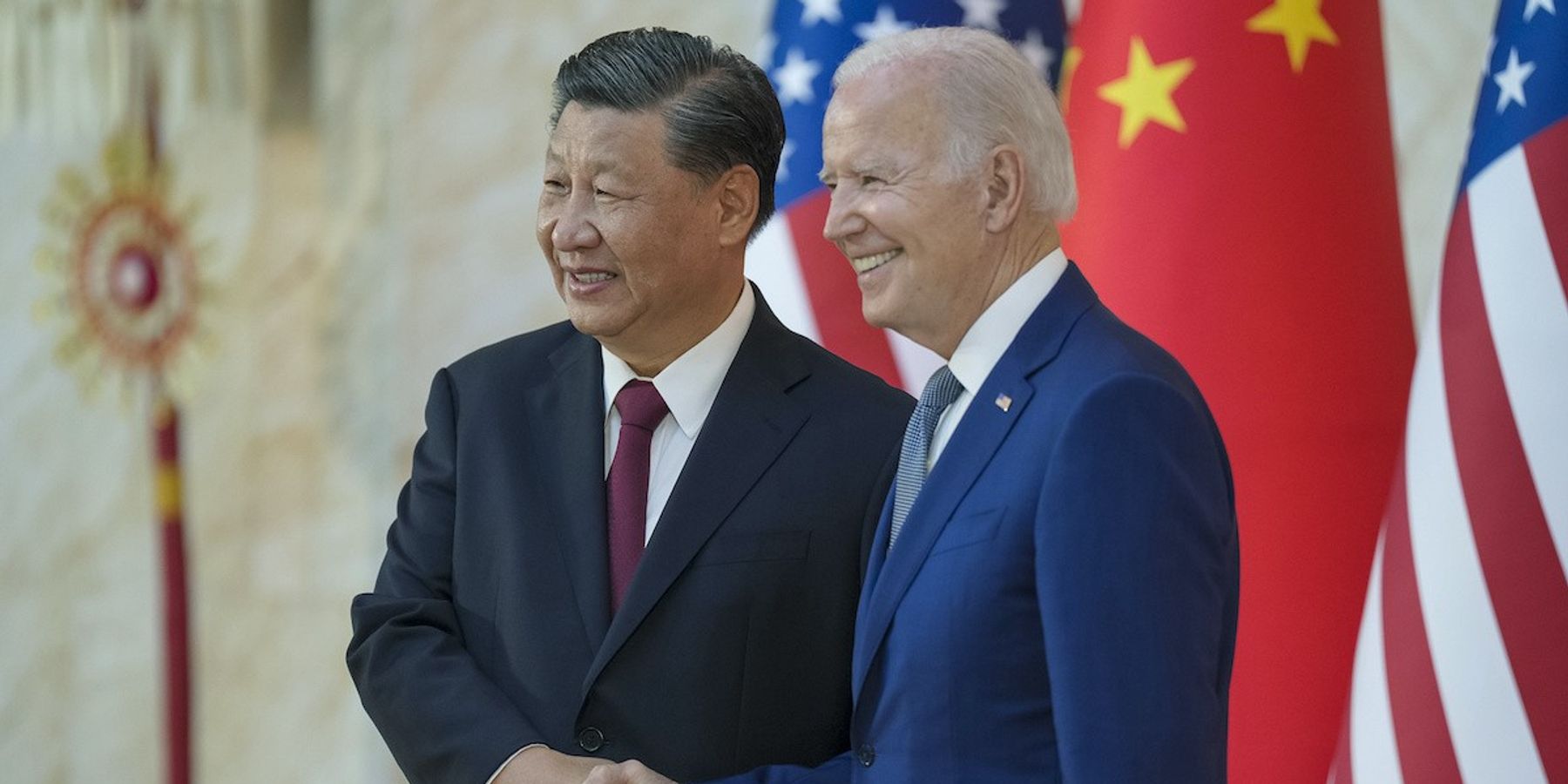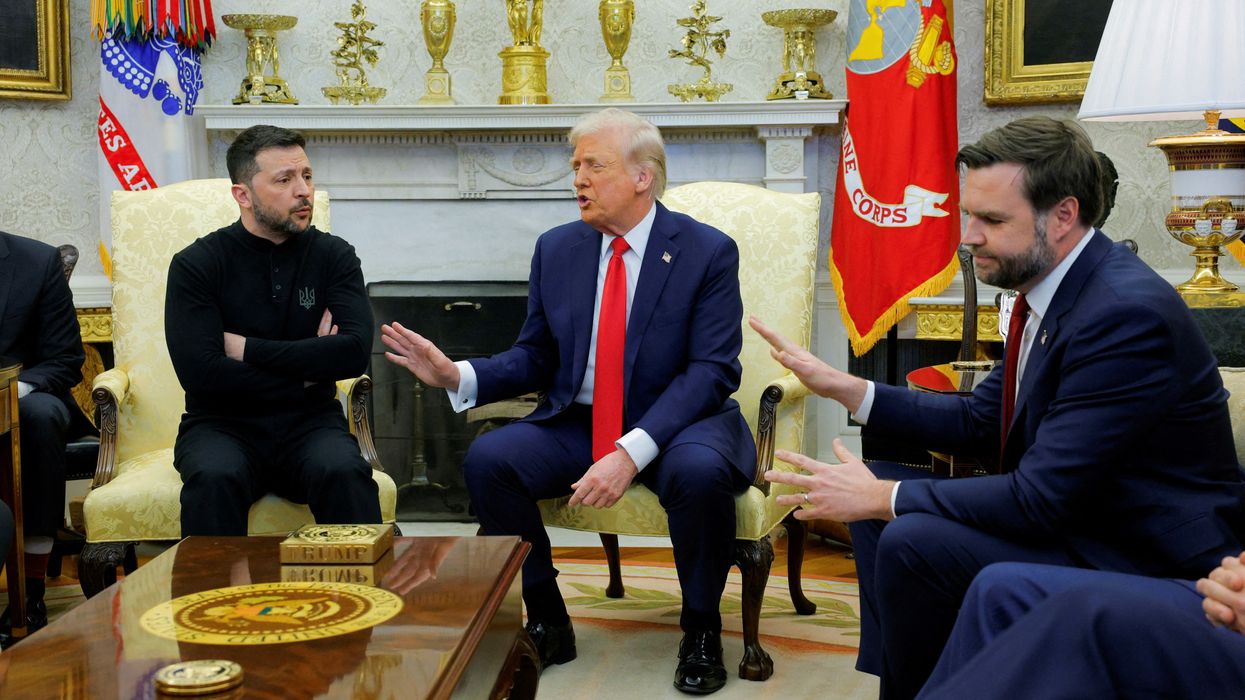The much-ballyhooed summit meeting between Xi Jinping and Joe Biden, occurring yesterday on the sidelines of the APEC meeting in San Francisco, was viewed by many observers as a critical opportunity for the two nations to establish a degree of enduring stability in their tumultuous relationship.
Although some limited agreements and understandings were apparently reached and some encouraging remarks uttered, the meeting fell far short of providing an enduring basis for much of anything beyond a willingness to keep talking and avoid conflict.
On the positive side, of greatest note is the fact that the two presidents agreed on steps to reduce the influx into the United States from China of items fueling the fentanyl crisis in this country and affirmed a general desire to strengthen dialogue on various military-to-military topics and reaffirm the openness of direct lines of communication between military leaders responsible for Asia-Pacific security. Additionally, according to the Chinese readout of the summit, President Biden reiterated the so-called five-point commitment he made regarding Taiwan at the Bali summit last year– that the United States does not seek to start a new Cold War, change China’s political system, mobilize alliances against China, or support Taiwan independence, and has no intention of engaging in conflict with China.
While certainly helpful, such developments and repetitions of past statements do not appreciably stabilize the overall relationship in an enduring manner, nor, in the absence of such stability, create serious momentum for the creation of a substantive crisis communication dialogue between the two sides. Particularly worrisome is the fact that no progress whatsoever was evident in creating an agreed-upon vision and framework for the relationship that could provide genuine stability over time. Indeed, nothing that occurred at the summit has altered the fundamentally adversarial nature of relations, nor appreciably lessened the deep levels of mutual suspicion and uncertainty that plague it.
For its part, Washington has made it very clear, in comments made before and after the summit by President Biden and senior officials, that it intends to remain primarily focused on improving its competitive capacities at home, pulling countries into greater alignment with the United States in countering China, and competing intensely with Beijing in a largely zero-sum struggle between democratic and authoritarian values, norms, and international structures.
In this effort, achieving genuine, substantive cooperation in reaching a middle ground or compromise on key issues like the climate challenge, high-tech innovation, and developing more broad-based, inclusive economic and trade structures, is either dismissed by U.S. officials as unrealizable or having been tried and failed in the past. And no effort is being made to define what a stable relationship should look like over the long term. In short, the primary focus of U.S. policymakers remains on keeping talking and avoiding the worst case, not the creation of a durable basis for productive, mutually beneficial relations.
For its part, Beijing has shown no evidence that it has altered its view that the problems in the relationship are due solely to U.S. actions. It continues to insist that China only wants “win-win,” productive outcomes and that it has no intention nor desire to displace the U.S. position in the world nor undertake policies designed to weaken or constrain the United States. But this belies a determined Chinese effort to reduce international support for U.S. alliances, create alternative economic, security, and political structures to those led by the United States, and increase its military or quasi-military pressure on U.S. allies and partners. Such soothing Chinese words also run counter to internal statements made on several occasions by Xi Jinping and Chinese officials to the effect that China must develop far greater economic and military capabilities in order to counter a United States that is fundamentally committed to weakening China and ending communist party rule.
Whether precipitated by supposedly threatening U.S. actions or rooted primarily in preexisting ideological views (or both), such Chinese behavior and attitudes will continue to validate, in the minds of many U.S. observers, the disingenuous nature of Chinese statements and the fundamentally threatening nature of the Chinese regime and thereby continue to justify arguments for ever greater levels of deterrence over any meaningful attempts at reassurance on virtually any issue, from trade to Taiwan.
Adding to the problem, the mutually reinforcing, negative dynamic still operating on both sides will no doubt continue to generate considerable fatalism among some scholars, political figures, and defense analysts who posit that greatly increased levels of military deterrence are needed to avert an otherwise unavoidable conflict, or that such conflict will ultimately prove inevitable regardless of how much deterrence is employed. From this perspective, the notion that Washington or Beijing can be reassured in meaningful ways on vital issues becomes largely moot.
The most significant source of such pessimism is the specific dynamic regarding Taiwan, along with the poor state of crisis communication between Washington and Beijing. On the former issues, leaders in both countries publicly espouse, in rote terms, their commitment to the original bilateral understanding regarding the island that has kept the peace for decades — involving Chinese support for peaceful unification as a top priority and U.S. support for its One China policy. However, both sides have nonetheless steadily eroded the credibility of that understanding through both words and actions, to the point where such mutual assurances now carry little weight in either capital. As both sides fail to credibly reassure each other, the likelihood of an eventual conflict would increase.
Nothing that Biden and Xi said at their meeting offers the prospect of altering this dynamic going forward, despite Biden’s endorsement of the One China policy and his reported reaffirmation of commitments he made last year in Bali. Rather than clearly reaffirming and explaining the basic limits that will exist on U.S. relations with and support for Taiwan (central to the One China policy) and the absence of any deadline for Chinese efforts to unify with Taiwan (central to Beijing’s policy of peaceful unification), the two presidents merely repeated past statements, while advising one another to stop provoking the situation.
On defense issues and crisis communication, the two presidents’ statement of their commitment to resuming or strengthening a few defense dialogues and channels of communication is certainly a good thing. However, no mention was made of several more important interactions, including the Defense Consultative Talks (renamed the Defense Strategic Dialogue in 2020), the Asia Pacific Security Dialogue (renamed the Defense Policy Exchange, also in 2020), and the Crisis Communication Working Group (CCWG), which fell into disuse after 2021. These dialogues are all highly essential to any effort to provide an enduring and productive foundation for the relationship
In the absence of such stability, the failure of the two presidents to clearly reaffirm the CCWG is particularly disappointing. In fact, resuming CCWG meetings should be the first step in creating a broader crisis dialogue that extends well beyond the mil-mil level. This dialogue should involve both civilian and military officials from several agencies with the experience, knowledge, and authority to discuss the full range of attitudes, policies, and possible mechanisms that relate to managing and preventing crises.
Such an ambitious but necessary effort will likely require the creation of a two-tier or two-channel crisis dialogue, one focusing on national-level issues relating to the strategy and policy aspects of crisis prevention and management, and the second channel relating primarily to defense establishment prerogatives and responsibilities, but with some civilian input. The latter would focus mainly on crisis management mechanisms, and the former on risk reduction/prevention and policy solutions.
Creating such a structure will, in turn, require a willingness on both sides to recognize that they each contribute to the negative dynamic driving toward a crisis over Taiwan or some other bilateral political-military dispute and that both crisis prevention and crisis management must be essential topics for discussion in any efforts to avoid confrontation and conflict. None of this was suggested at the Biden-Xi summit.
Because of this failure, Beijing will likely continue to resist creating genuine crisis management dialogues and mechanisms, viewing them as a way for Washington to escalate its provocative, crisis-inducing behavior while avoiding an actual conflict. And Washington will continue to resist Beijing’s desire to discuss crisis prevention, viewing it as a way for China to pressure the United States to reduce its support for Taiwan, or its military presence in Asia.
Overcoming this impasse will not be easy but could occur with the assistance of unofficial crisis dialogues held at the Track Two or Track 1.5 level. Such conversations between former officials, scholars, and military officers, some in existence for years, can raise topics and present ideas and solutions that would prove virtually impossible at the official Track One level. But no hint of this was evident at the summit, or in subsequent remarks by lower-level officials.
The Biden-Xi meeting was arguably a lost opportunity to open the door toward a more genuinely stable and productive long-term Sino-American relationship. At best, it has temporarily slowed the pace toward more contention and possibly conflict, especially over Taiwan. Lacking the will and political courage to take the hard, risky steps that could put relations on a sound footing over the longer term, the two presidents opted for “small beer,” in the form of a few soothing words and limited agreements. As a result, the relationship will likely continue to slide downward and remain prone to severe disruptions. Perhaps it is asking too much of the two presidents to take any risks in attempting to reach a more solid foundation, but the stakes involved suggest that they would be well worth taking.
- Lots of talking produced Xi-Biden meeting. Now, action? ›
- Senate delegation throws new twist into US-China ties ›
- Biden-Xi phone call doesn’t go far enough | Responsible Statecraft ›
















